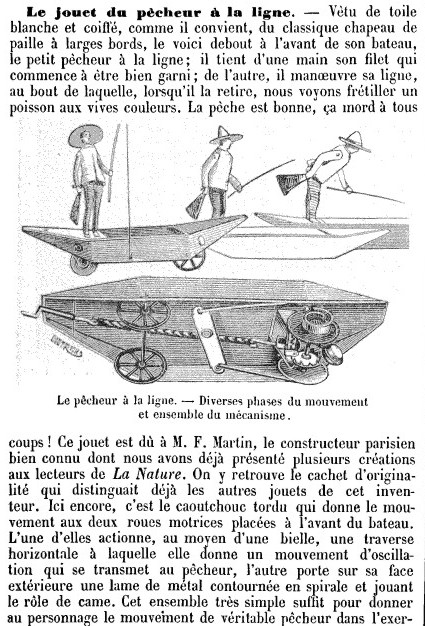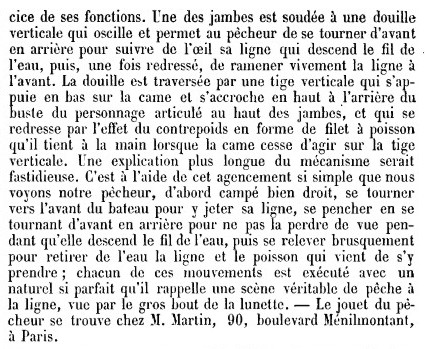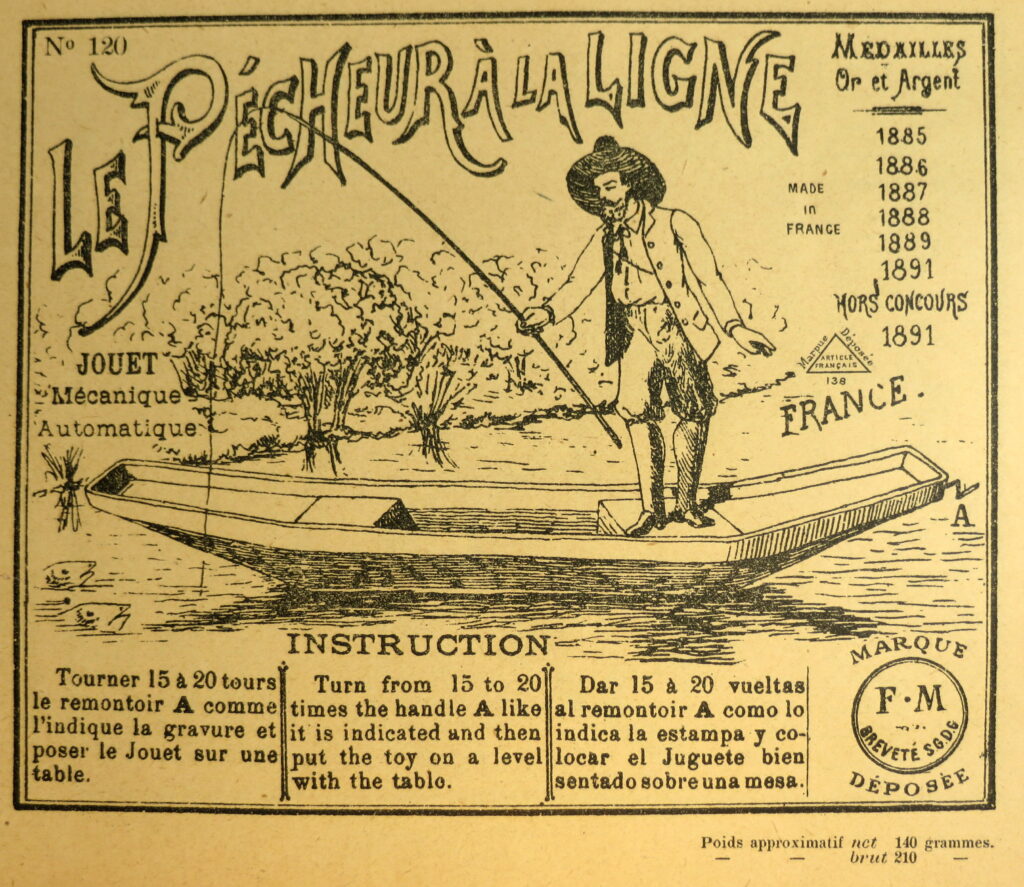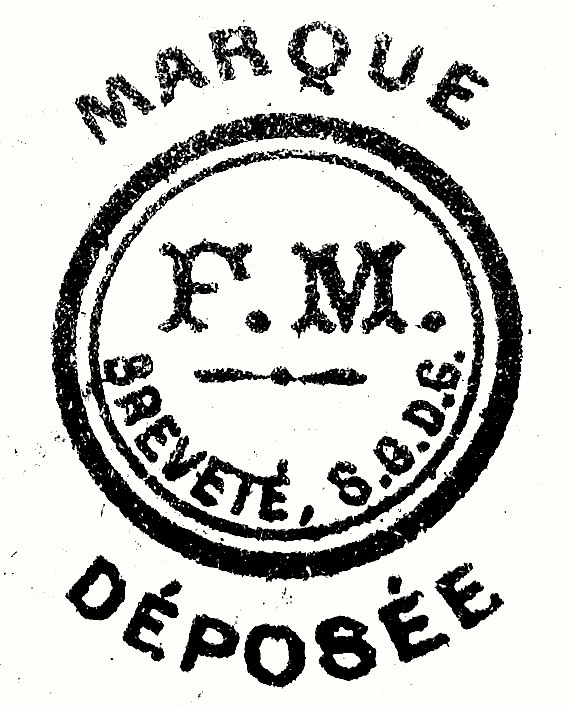
I found an article in an old French technical magazine La Nature from 1892 about a tin fisherman made by Martin.
This nice piece is put in motion by the well-known Martin “rubber band” method, the winding is done by the winding handle at the front of the boat, under the boat is the “rubber band” that goes to the movement mechanism.
It was first made in 1892
length approx 22cm ( 8,66 inch)
Fernand Martin number 120



The free translation of the above text :
Le jouet de pécheur à la ligne
Dressed in white canvas and wearing, as it should be, the classic wide-brimmed straw hat, he is standing at the front of his boat, the little fisherman on the line; he holds in one hand his net which is beginning to be well filled; on the other, he maneuvers his line, at the end of which, when he withdraws it, we see a brightly colored fish wriggling.
The fishing is good, it works every time!
This toy is due to Mr. F. Martin, the well-known Parisian manufacturer of which we have already presented several creations to the readers of La Nature.
We find there the cachet of originality which already distinguished Ies other toys of this inventor.
Here again, it is the twisted rubber band which gives movement to the two drive wheels placed at the front of the boat.
One of them actuates, by means of a connecting rod, a horizontal cross member to which it gives an oscillating movement which is transmitted to the fisherman, the other carries on its outer face a metal blade contoured in a spiral and playing the role of cam.
This very simple set is enough to give the character the movement of a true fisherman in the exercise of his functions.
The one of the legs is welded to a vertical socket which oscillates and allows the fisherman to turn back and forth to follow with his eye his line which descends the stream, then, once straightened, to bring back strongly the line in front.
The socket is crossed by a vertical rod which rests at the bottom on the cam and hooks at the top to the back of the bust of the character articulated at the top of the legs, and which is straightened by the effect of the counterweight in the form of a net with fish he is holding in his hand when the cam stops acting on the vertical rod.
A longer explanation of the mechanism would be tedious.
It is with the help of this simple arrangement that we see our fisherman, first camped upright, turn forwards and backwards to cast his line, lean while turning back and forth to do not lose sight of it as it descends the stream, then stand up abruptly to remove the line from the water and the fish that has just taken it each of these movements is executed with a natural so perfect that it recalls a real scene of angling, seen through the big end of the telescope.
The fisherman’s toy can be found at M. Martin’s, 90, boulevard Menilmontant, in Paris.

